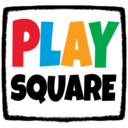 A Q&A with PlaySquare co-founder and CEO Alex Kay. The New York City–based company was founded in April 2011 and released its first epidsode at the tail-end of June.
A Q&A with PlaySquare co-founder and CEO Alex Kay. The New York City–based company was founded in April 2011 and released its first epidsode at the tail-end of June.
SUB: Please describe Playsquare, and the value proposition you offer to children and parents.
Kay: PlaySquare is bringing television to a new level by allowing a child to actually step into a property’s story world to explore and discover and assist the characters in moving each story along. We call it ‘Touchable Television’ and we think this is the model for the next generation television that’s active, not passive, meets our children’s expectations for interactivity, and meets parents’ desire for content that is both delicious and nutritious.
SUB: Who are your target users?
Kay: We are targeting parents of children 3-to-6 and are looking to create a shared experience that allows parents to feel good about PlaySquare as great entertainment as well as a tool that enriches early learning. Our target user is an entirely new generation of children who are growing up with all of this new technology. They are the touchscreen generation and their expectations for media are much different than our expectations were before this technology shift. Right or wrong, to these children, anything that is not interactive is not worthy of their attention.
SUB: Who do you consider to be your competition?
Kay: There are a lot of companies creating interactive content for children and they run the gamut from interactive books to web-based games to educational apps.
SUB: What differentiates Playsquare from the competition?
Kay: For us, it’s about story. We think that most interactive content is highly activity-based and is missing story. PlaySquare comes from the television world. We are long on television because of the great story, characters and story worlds that television is capable of providing. So, we are taking this great story-based content and making it better by allowing the child to actively participate in the stories and story worlds that we have created. We are finally able to pay off on the ultimate promise. Before, we set up the construct and could only hope that a child would create the connection between themselves and what they are watching. Now they can actually be part of it. We are not a game or an activity as much as we are an example of what seamless story-based interactive media can be in the 21st century.
SUB: When was the company founded and what were the first steps you took in establishing it?
Kay: The company was established in April 2011 and soon thereafter, we were able to secure our first license to create touchable television. At that point, we kept our heads down and developed our prototype episode.
SUB: What was the inspiration behind the idea for Playsquare? Was there an ‘aha’ moment, or was the idea more gradual in developing?
Kay: The release of the iPad triggered the idea for touchable television. I had just spent seven years producing a children’s property called WordWorld, which was funded in part by the Department of Education. During the development, we were always frustrated by the constraints of television with respect to the amount of content and the limitations to interactivity. When the iPad was released, I realized that this was the ‘killer app’ for what we were trying to achieve in that it enabled us to expand the content and allowed us to truly involve each child on a very personal level. While it seemed like a good idea at the time, I had no idea how well children would take to the tablet and how quickly that would accelerate demand for great interactive content.
SUB: What have the most significant obstacles been so far to building the company?
Kay: Creating a new product from scratch is never easy. In fact, after bringing on our CTO and platform architect last fall, we ended up redefining our interface which led to scrapping six months of work on our first episode. We are fortunate now that we have the benefit of a great team who are extremely excited about what we are doing and have the experience required to create an efficient but effective development process with limited resources.
SUB: Have you raised outside funding? If so, how much and when? If not, do you plan to in the near future?
Kay: We have bootstrapped our efforts to date with sweat equity and a small round of friends and family money to get our first product into the market. Now that we have a product in the market, we are able to demonstrate demand from both parents and property owners. At this point, we have begun speaking to institutions to fund the development of our network platform, production toolsets and additional touchable television properties.
SUB: How does the company generate revenue or plan to generate revenue?
Kay: PlaySquare is developing a branded destination for the tablet, akin to a 21st century television network that is personal, mobile and interactive. It will be a safe haven for children and a curator of great interactive content for parents. The PlaySquare network app will live on tablet and will be free. Parents can then buy individual episodes or collections of episodes as ‘in app’ purchases. Our goal is to release new episodes monthly for each property license we own which will create a recurring revenue stream.
SUB: What are your goals for PlaySquare over the next year or so?
Kay: In June, we launched our first touchable television episode. We are now developing additional episodes as well as our network platform including a store and games and activities for holiday 2012. We hope to announce several new property deals in the near future and to have multiple properties available in early 2013. We are also working on a production toolset that will allow others to develop touchable television content for our platform in the future. That’s it!
PlaySquare – www.playsquare.tv












